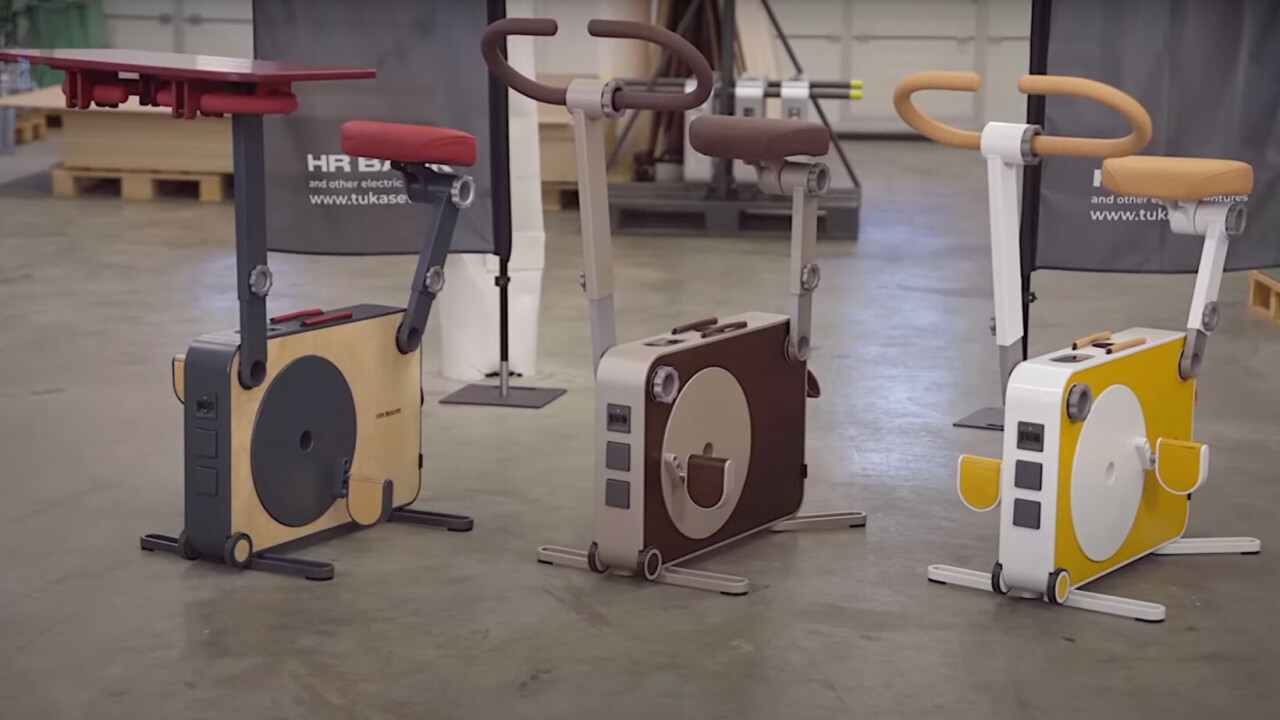
Lithuanian startup Tukas EV has developed an exercise bike that harnesses the energy you produce while peddling and stores it as a backup source of power for household devices and appliances.
The exercise bike, dubbed HR Bank, was designed to provide urban dwellers with a reliable source of clean energy, but, perhaps more importantly, also for those in need of power during emergencies like natural disasters or wars.
“Our idea was that a person who bought an HR bank could not only use it as an external battery, charged from the sun or the grid, but in the absence of an external power source, could generate energy by pedalling,” said CEO Jonas Navickas.
The HR Bank is essentially a giant power bank equipped with pedals and handlebars. It harnesses the kinetic energy produced as you peddle, converts it into electricity, and then stores it for later use.
HR Bank was designed to be easily transportable, and suitable for people of all ages due to an adjustable steering wheel, seat, and tilt angle. It can even become a workstation by attaching a desk, said the startup.

The energy generated as you peddle is stored in a 2kWh battery — enough juice to charge most household devices like mobile phones and laptops and appliances, such as a fridge. The battery can also be recharged by plugging it into the electricity grid, car batteries, solar, or wind power. A fully charged bicycle can power a TV for two days, a refrigerator for three days, or charge many smaller devices for every day use.
According to Navickas, the war in Ukraine was the decisive push to build the bike. “When the bombing of Ukraine’s infrastructure started, I was shocked by the sight of people with many extension cords trying to get electricity from one power generator to charge their phones.”
“Access to electric energy is a crucial element to one’s livelihood, which was the main motivation for the team to create, refine, and launch a product that could address the issue,” he added.
The exercise bike can come in handy not only in situations of war but after floods or other natural disasters. The recent floods in Italy’s northern Emilia-Romagna region, for instance, left a significant part of the local population without electricity for days.
According to Navickas, electric infrastructure is extremely fragile when faced with challenges like extreme weather events, and therefore, access to alternative energy sources becomes crucial to ensure one’s safety and well-being. Unlike some emergency power solutions like wind or solar, the bike can be recharged no matter the weather conditions.
However, with a starting price of almost €3,000 for the entry-level model, my guess is that disaster-struck communities will probably not be pedalling their way to energy self-sufficiency anytime soon. Here’s to hoping it can be subsidised by an NGO or state aid.
Get the TNW newsletter
Get the most important tech news in your inbox each week.





